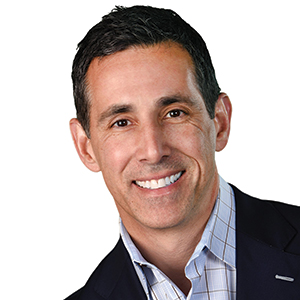One of the most important takeaways of the last two years for business owners is this: You must focus on the mental health of your employees. This is not due solely to COVID-19 or any of the political, environmental or personal tensions prevalent today. This necessity is born of the combination of today’s stressors, which are taking a toll.
Reports show that one in five Americans will experience a mental illness in a given year. Employers looking to nurture a mentally healthy workplace are searching for sustainable solutions, and they’re on the horizon. The normalization of mental health resources in the workplace is the wave of the future.
So what are small and mid-sized companies doing about mental health now? Many give their employees mental health days to provide some measure of support. This is good, but when someone is really struggling, or helping a loved one who is struggling, a day or two off a month doesn’t cut it. They need access to resources designed to help them navigate the problem.
Schools do this very well, and in the midst of COVID, stepped up their support of students’ social, emotional and behavioral mental health. Companies should take a similar approach. However, particularly at small businesses, leadership may not know where to start or how to access mental health resources.
The most common resource is the Employee Assistance Program (EAP). These are often underutilized and may be embedded in corporate insurance policies. Some companies may not even be aware that they have an EAP or, if they are aware, they fall short in promoting EAP resources to employees. Or the EAP may be lacking and doesn’t include up-to-date offerings such as educational content, preventive care programs and digital access to services.
An EAP is important because access to mental health resources is not just about employee/workplace issues. It’s about employees and their families, too. When a spouse, child or other family member is struggling with mental health issues, the employee struggles, too, and vice versa.
Leading the charge
Human resources professionals are the point people to identify mental health resources and build them into a company’s repertoire. I’ve talked to many HR experts about how they envision this evolution for small businesses, and they all concur that there’s a line you can’t cross; you can’t place a counselor or psychologist within the company. Instead, a program should identify actionable resources to which you can point employees in support of their well-being. As it becomes more commonplace for companies of all sizes to offer access to mental health resources, we will see the emergence of entrepreneurial businesses facilitating those resources.
The first step is to make sure you have an EAP and that you’ve vetted that EAP. Is it as robust as it should be? What is the usage rate for your company? Is the cost competitive?
Next, train your managers to identify employees who are struggling and establish clear protocols outlining what to do if a manager notices an issue and what actionable help items are available.
Finally, if you don’t have an EAP, or need help evaluating what resources you do have available, look outside the company for guidance. Good EAP programs don’t necessarily come with a huge cost to the company, but taking care of your employees and making sure they are sound is invaluable. ●
Mark D’Agostino is President of ConnectedHR


